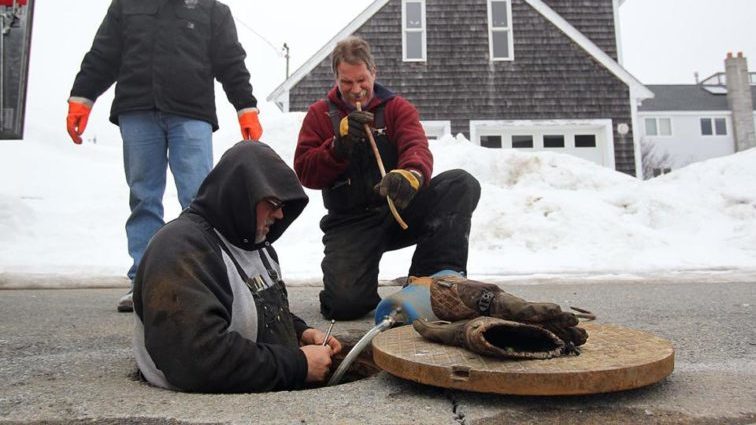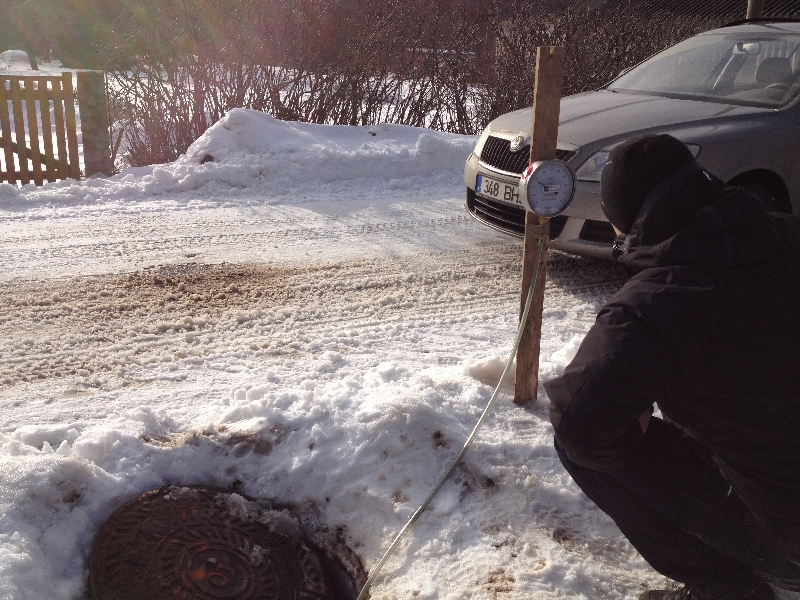Frozen vacuum sewers and the lessons from Northern Europe
- 10 January, 2020

Over the Northern winter we read with interest a number of stories related to frozen vacuum systems. It was caused by some of the worst winters seen in 100 years in the North East of America. These stories have increased in recent years with some commentators talking about the reality of climate change and its impact on many types of infrastructure, not just sewerage.

Laying vacuum mains at the correct depth to avoid freezing
To understand some of the problems you need to go no further than googling “Plum Island frozen sewers”. The main problems seemed to be related to frozen vacuum valves, water frozen in the pits, goose neck vents submerged by snow, frozen sewage in the pipework, frozen gate valves and division valves and leaks in the line.
Does this need to be the case every year that there is a big dump of snow or temperatures fall? Aren’t vacuum system supposed to be resilient? We don’t have to look as far afield as the vacuum systems in Alaska or even at the Arctic and Antarctic bases to get some solutions to the problems encountered in America. Germany, France, Poland the UK and some of the Nordic countries like Estonia have experienced very low temperatures and extreme snow falls from time to time with little impact on their vacuum systems.
Local conditions

Frozen Collection Pit in Plum Island U.S.A.
As an engineering firm we need to be aware of local conditions where ever we install a system whether it is in the arid desert of Australia, tropical conditions in Malaysia, remote islands in the Cocos Islands. All systems should be designed to suit the local conditions.
- Many of these things can be adjusted in existing systems. One of the important developments in how Flovac vacuum systems are managed is in the use of monitoring systems at the valve and pit. As a standard in cold conditions we monitor the temperature in the pit via our monitoring system.
This would have helped a lot in the Plum island project as any valve failures would have been easily and quickly located due to freezing ensuring no loss of service for residents or sewage overflows into their basements.

Routine system maintenance of the Flovac Vacuum System in Estonia
Flovactronic
- The monitoring system also makes it very easy for operators to locate the exact location of collection pits. This is also true in coastal area’s where pits can often be covered by sand during the summer months. Many communities in the US are fretting over what will happen next winter with their vacuum systems. Will the Fire station chief need to allow residents to use their showers and toilets. Will portable toilets be sold out early, or will everyone just head for Florida. Maybe one solution is to contact us here at Flovac and we would bring a team of experts from Europe to look at ways to ensure that your Happy Holiday season is truly Happy. Flovac Vacuum Sewerage Systems are experts in solving difficult wastewater engineering problems in unique geographic areas with Global Knowledge and Local Solutions.
Get our news
Temas
Archives
FLOVAC
Flovac is the world’s leading vacuum sewerage engineering, supplier and operation company.
Primer de Maig 4 Street
08980, Barcelona
Spain

CONTACT US
COPYRIGHT © 2021 FLOVAC - THE GREEN FUTURE OF SEWERAGE


